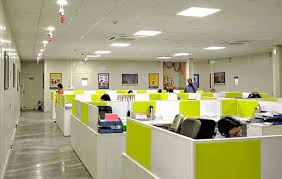
In the grand tapestry of human history, few institutions have undergone as dramatic a transformation as the office. Once a monolithic symbol of corporate culture, the office has evolved into a dynamic space that reflects the changing nature of work, technology, and societal values. From the industrial age to the digital era, the office has adapted and innovated, becoming a nexus of collaboration, creativity, and community.
The concept of the modern office can trace its roots back to the Industrial Revolution of the 18th and 19th centuries. With the rise of factories and mass production, centralized workspaces became essential for coordinating tasks and maximizing efficiency. Rows of desks, hierarchical structures, and rigid schedules defined early office environments, reflecting the hierarchical and bureaucratic nature of organizations at the time.
However, the dawn of the Information Age in the late 20th century brought about profound changes in how work was conducted. Advancements in technology, particularly the widespread adoption of computers and the internet, revolutionized communication and workflow. Suddenly, physical proximity was no longer a prerequisite for collaboration, as colleagues could connect instantaneously across vast distances.
This shift gave rise to the concept of remote work and distributed teams, challenging the traditional notion of the office as a fixed location. Organizations began to experiment with flexible work arrangements, allowing employees to telecommute or work from home part-time. This trend gained momentum in the early 21st century, fueled by improvements in digital connectivity and a growing emphasis on work-life balance.
Yet, even as remote work gained popularity, the physical office persisted as a vital hub for productivity and innovation. Recognizing the importance of face-to-face interaction, many companies invested in creating dynamic workspaces designed to foster collaboration and creativity. Open-plan layouts, communal areas, and amenities such as lounges and cafes became commonplace, encouraging spontaneous interactions and cross-pollination of ideas.
Moreover, the office evolved into more than just a place to work—it became a symbol of organizational culture and identity. Companies sought to differentiate themselves through the design and aesthetics of their work environments, creating spaces that reflected their values and ethos. From tech giants with sprawling campuses to startups with quirky, unconventional offices, each workplace told a story about its occupants and their aspirations.
However, the COVID-19 pandemic of 2020 brought about perhaps the most significant upheaval in the history of the office. As lockdowns and social distancing measures forced businesses to adapt overnight, remote work became the new normal for millions of workers worldwide. The once-familiar rhythms of office life were replaced by virtual meetings, collaborative tools, and the blurred boundaries between work and home.
Despite the challenges posed by the pandemic, it also accelerated trends that were already underway, such as the adoption of remote work and digital collaboration tools. Many organizations realized that they could maintain productivity and efficiency without the need for a traditional 오피뷰 office space, leading to a reevaluation of the role of physical workplaces in the future.
Looking ahead, the office is likely to continue evolving in response to changing needs and preferences. Hybrid work models, which combine remote and in-person work, are expected to become increasingly common, offering the flexibility and autonomy that many employees desire. Meanwhile, advances in technology, such as virtual reality and augmented reality, may further blur the distinction between physical and digital workspaces, enabling new forms of collaboration and interaction.
In conclusion, the office has come a long way from its humble origins as a utilitarian workspace. From the industrial age to the digital era, it has adapted and transformed in response to shifts in technology, culture, and society. As we navigate the complexities of the modern workplace, one thing remains clear: the office will continue to evolve, reflecting the ever-changing nature of work and human endeavor.